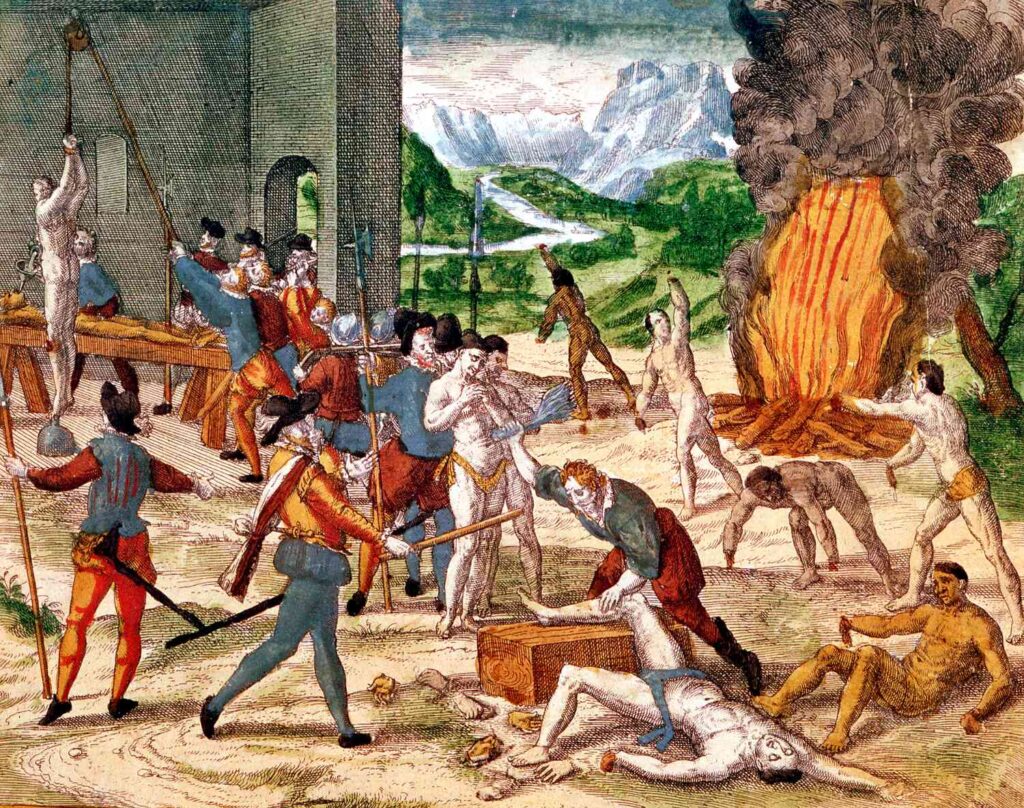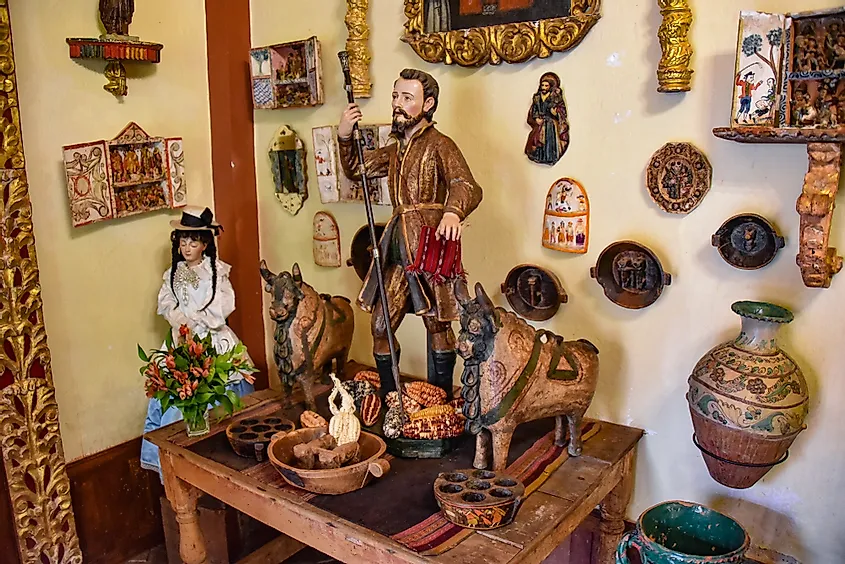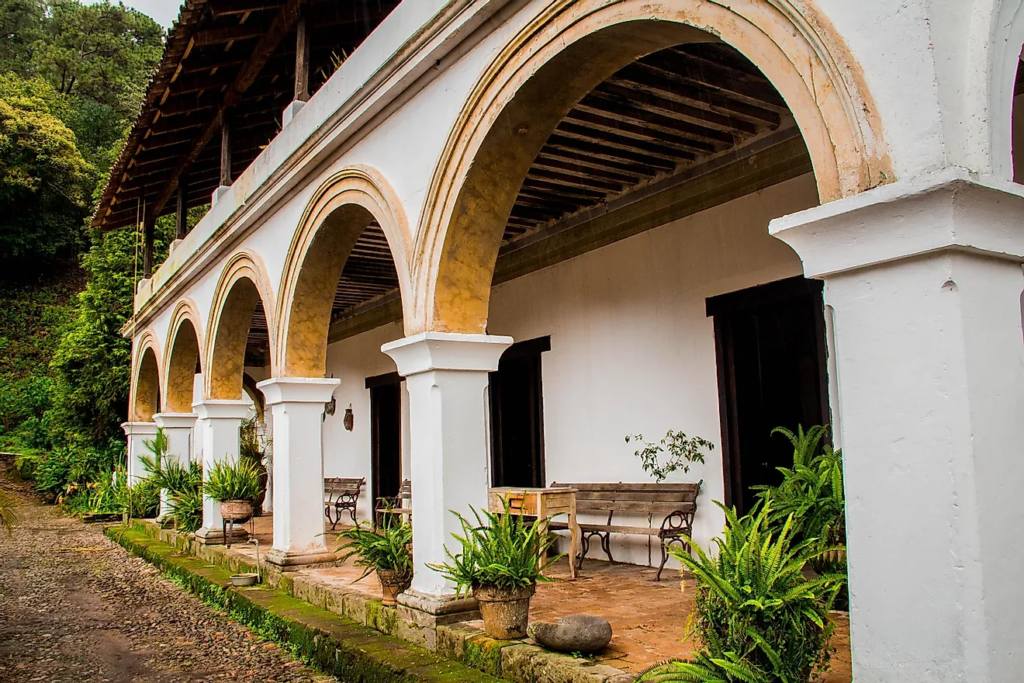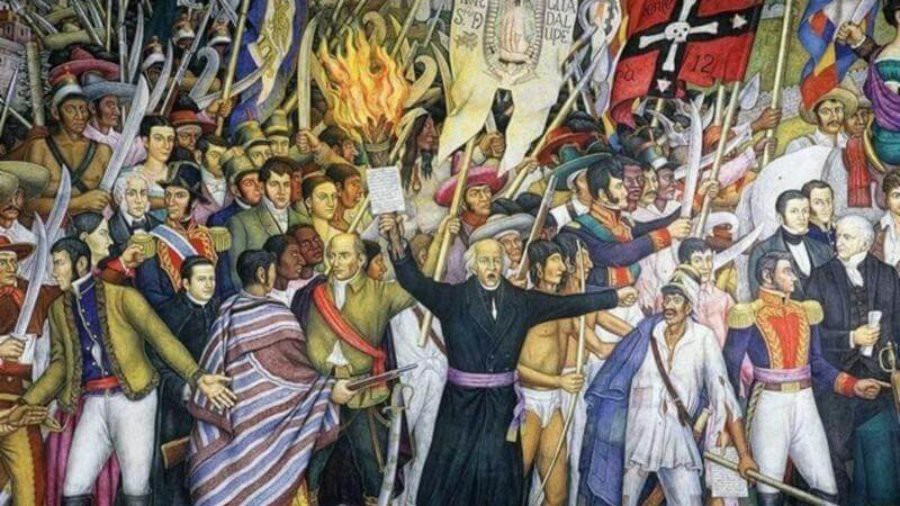A Comprehensive Journey through the History of the Hacienda System
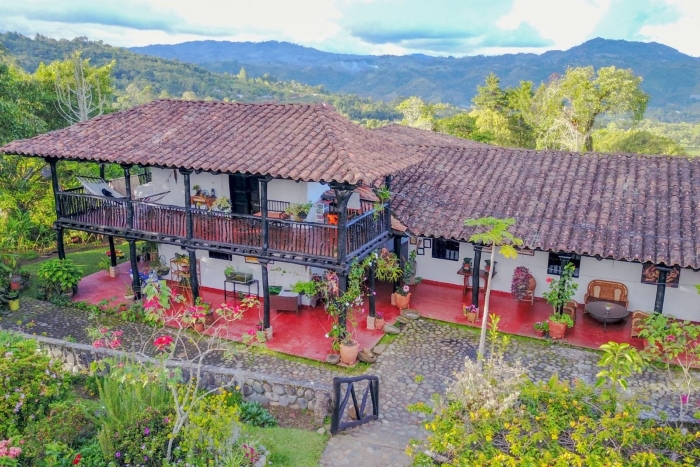
In the annals of records, few chapters resonate as profoundly as that of the Hacienda System, a long-lasting legacy of the Spanish Empire within the Americas. This weblog embarks on a captivating exploration, unwinding the tricky tapestry of the System’s origins, mechanics, and some distance-reaching effects on the socio-financial cloth of Argentina, Bolivia, Chile, Colombia, Guatemala, El Salvador, Mexico, New Granada, and Peru.
Rooted in land allocation and agricultural hobbies, the Hacienda System fostered attention to wealth and energy, shaping the destinies of nations. From the emergence of rich landholding households to the complex dynamics of hard work practices, we delve into the device’s profound implications. Join us on this comprehensive journey via time, as we get to the bottom of the threads that bind the beyond to the present, revealing the lasting echoes of the Hacienda System.
Understanding the Hacienda System:
At the coronary heart of the Spanish Empire’s influence within the Americas lay this System, a pivotal organization that shaped the socio-financial landscape. The gadget, essentially rooted in the allocation of considerable land holdings, aimed to gas agricultural manufacturing and financial prosperity. Originating from imperial goals, it has become a defining function of Spanish colonialism, leaving an indelible mark on the New World.
The Mechanics of the Hacienda System:
- Land Allocation: The Spanish government allocated sizable land holdings to personal citizens, called hacienderos. Purposeful distribution aimed at stimulating agricultural production.
- Role of Hacienderos: Hacienderos assumed twin roles as landowners and agricultural manufacturers. Responsible for overseeing the everyday operations of the estate.
- Haciendero-Sacada System: The emergence of an extraordinary agrarian dating system. Solidification of landownership inside the palms of a privileged few.
- Socio-Economic Hierarchy: The attention to land possession fostered a unique social and economic hierarchy. Power dynamics in the estate are prompted by wealth and have an impact on hacienderos.
- Agricultural Focus: Primary emphasis on agricultural activities, starting from cultivation to cattle. Production is geared in the direction of maintaining local economies and contributing to broader change networks.
- Influence on Labor Practices: Utilization of indigenous and enslaved exertions to ensure green estate operations. Formation of an established social hierarchy based on hard work roles.
Evolution of Land Ownership:
Concentration of Land in the Hands of a Few:
- Historical Shift: Over time, a considerable transformation took place in land ownership patterns in the System. The preliminary egalitarian distribution gave manner to a said awareness of land within the arms of a chosen few.
- Influence of Socio-Political Factors: The attention of land became not completely a financial phenomenon; it changed into intricately tied to socio-political developments. Political systems and alliances performed a pivotal function in determining the distribution and consolidation of land possession.
Rise of Wealthy Landholding Families:
- Emergence of Notable Families: The evolution of the Hacienda System witnessed the upward thrust of influential landholding households throughout exclusive regions. These households became crucial figures in the financial, political, and social landscapes in their respective regions.
- Economic and Social Implications: The ascendancy of wealthy landholding families had profound implications for the areas they ruled. Economic electricity is focused in the hands of these households, shaping nearby economies and influencing broader financial trends.
- Dynastic Influences: Land Ownership became not handiest an economic asset but a marker of social repute and impact. Dynastic concerns played a role in the perpetuation of focused landownership inside effective families.
- Impact on Society: The impact of wealthy landholding families extended past financial realms, permeating the social material. Social hierarchies had been hooked up, and the power dynamics inside communities were often dictated with the aid of the have an impact on these prosperous landowners.
Geographic Spread of the Hacienda System:
Argentina:
- Historical Overview: In Argentina, the System left an indelible mark on the state’s economic history. Large landholdings became financial powerhouses, contributing notably to the country’s boom.
- Economic Impact: The haciendas in Argentina performed a pivotal function in shaping the state’s agricultural identification. Crops and farm animals produced within these estates contributed appreciably to the economic prosperity of the area.
Bolivia, Chile, and Colombia:
- Unique Adaptations: Bolivia, Chile, and Colombia each witnessed special variations of the System. Regional versions emerged, inspired by neighborhood geography, weather, and financial priorities.
- Regional Variations: The economic and social impact of the Hacienda System in these international locations was inspired by the unique characteristics of each region. Agricultural practices, vegetation cultivated, and exertion dynamics are numerous based on local situations.
Central America (Guatemala, El Salvador):
- Role in Shaping Agrarian Landscape: The System performed a vital function in shaping the agrarian panorama of Central America. Large estates became facilities of economic interest, influencing the distribution of wealth and strength.
- Social Consequences and Resistance: The awareness of land possession in the palms of some led to social results and resistance moves. Communities sought to reclaim control over their land, through the mounted hierarchy.
Mexico, New Granada, and Peru:
- Diverse Geographical Settings: In Mexico, New Granada (now part of Colombia), and Peru, the Hacienda System adapted to various geographical settings. The monetary and social dynamics of each place were shaped by the interplay between the System and neighborhood conditions.
- Cultural Influences and Adaptations: The System left cultural influences in its wake, influencing local traditions and customs. Adaptations to local cultures have been important for the device to thrive, leading to a wealthy tapestry of cultural influences.
Economic Implications of the Hacienda System:
Agricultural Productivity:
- Contribution to Regional and National Economies: The Hacienda System played a pivotal role in contributing to the financial prosperity of regions and nations. Large-scale agricultural production within haciendas became a linchpin of nearby and country-wide economies.
- Crops and Commodities Produced: Haciendas have been facilities for various agricultural sports, cultivating an extensive range of vegetation and commodities. Cash crops, staple meals, and farm animals were produced on a massive scale, fueling trade and financial growth.
- Economic Powerhouses: Haciendas in diverse regions emerged as monetary powerhouses, influencing markets and trade networks. The surplus agricultural output from those estates not handiest sustained local populations but also contributed to international trade.
Labor Practices:
- Role of Indigenous and Enslaved Labor: The achievement of the System relied heavily on the utilization of labor, frequently sourced from indigenous and enslaved populations. Indigenous communities had been engaged in diverse agricultural obligations, contributing to the overall productivity of the estates.
- Structured Social Hierarchy: Labor practices inside the Hacienda System brought about the establishment of a structured social hierarchy. The division of exertion roles created distinct social classes, with hacienderos at the pinnacle and workers occupying subordinate positions.
- Influence on Social Dynamics: The reliance on indigenous and enslaved hard work had profound social implications, shaping the dynamics inside hacienda communities. Social mobility was frequently confined, and economic disparities were strengthened via exertion practices.
- Challenges and Resistance: The exploitation of hard work in the System caused challenges and resistance from laboring communities. Movements in search of honest treatment, land rights, and higher operating conditions emerged, reflecting the social tensions inherent inside the system.
Cultural Legacy and Modern Influences:
Impact on Cultural Practices:
- Influence on Local Traditions and Customs: The Hacienda System left a long-lasting imprint on the cultural fabric of areas where it thrived. Local traditions and customs have been considerably prompted by the practices and existence related to haciendas.
- Preservation and Reinterpretation: Cultural practices within haciendas, such as festivals, spiritual ceremonies, and social rituals, regularly persevered and developed. Communities engaged in a delicate balance of keeping traditional practices at the same time as adapting to changing socio-monetary landscapes.
Contemporary Reflections:
- Legacy in Modern Society: The legacy of the System reverberates in modern society, shaping the identities of groups and countries. Architectural remnants, cultural gala, and linguistic impacts are most of the tangible legacies that persist.
- Efforts to Address Historical Injustices: In contemporary instances, there is a developing awareness of the ancient injustices associated with the System. Efforts are underway to deal with those injustices, acknowledging the impact on indigenous and marginalized groups and in search of avenues for restitution.
- Cultural Preservation Initiatives: Various initiatives intend to keep and revitalize cultural practices encouraged using the System. Museums, cultural facilities, and academic programs contribute to the understanding and appreciation of the cultural background tied to haciendas.
- Reinterpretation in Art and Literature: The cultural legacy of the System finds expression in artwork, literature, and different forms of innovative expression. Contemporary artists and writers discover and reinterpret the ancient significance of haciendas, contributing to ongoing dialogues about identification and heritage.
- Challenges of Modernization: The modernization of agriculture and land use has led to challenges in keeping the cultural legacy of haciendas. Balancing monetary improvement with cultural renovation stays a dynamic and from time to time contentious aspect of modern-day discourse.
Additional Tips:
- Interdisciplinary Approach: Consider exploring the Hacienda System through an interdisciplinary lens, integrating insights from records, sociology, economics, and cultural research. This method enriches the knowledge of its multifaceted impact.
- Visual Documentation: Incorporate visual documentation including maps, historical photos, and architectural sketches to provide a visible narrative of the System’s unfolding and influence throughout unique regions.
- Primary Sources and Testimonies: Seek out the number one assets and tales from people connected to haciendas, together with letters, diaries, and oral histories. These private narratives offer a human angle at the studies of the System.
- Comparative Analysis: Conduct a comparative analysis of the Hacienda System in one-of-a-kind regions. Highlight similarities and variations in its implementation, effect, and eventual decline, supplying nuanced information about its various manifestations.
- Environmental Impact: Explore the environmental impact of the System using inspecting land-use practices, agricultural technology, and their consequences on nearby ecosystems. Consider how these practices motivated the region’s ecology.
Conclusion:
In the extensive tableau of records, the Hacienda System emerges as a complex narrative that has intricately woven its threads into the fabric of the Americas. From its origins in Spanish colonialism to its distance-attaining effect on land possession, economies, and cultures across Argentina, Bolivia, Chile, Colombia, Guatemala, El Salvador, Mexico, New Granada, and Peru, the System has left an indelible mark. The attention to land, the upward thrust of rich landholding households, and monetary implications have fashioned the destinies of nations. The geographic unfolding revealed various variations, each contributing to a unique socio-economic panorama. This legacy persists within the cultural practices and modern reflections of societies. As we navigate the echoes of the Hacienda System, we discover a profound talk among the past and present, urging us to reflect on the complexities and enduring influences of this agrarian group.
FAQs:
Q1: What is the Hacienda System?
Ans: The Hacienda System became a land possession mechanism implemented utilizing the Spanish Empire inside the Americas throughout the colonial period. It worried about the allocation of huge land holdings to personal Spanish citizens for agricultural production.
Q2: What changed into the number one motive of the System?
Ans: The number one cause of the System was to stimulate agricultural production and a financial boom inside the Spanish colonies. The Spanish government allocated land to personal residents (hacienderos) who have become liable for each land ownership and agricultural sports.
Q3: How did the System evolve?
Ans: Over time, the System witnessed a shift from substantial land distribution to the concentration of land in the palms of a privileged few. This evolution caused the emergence of wealthy landholding households, contributing to monetary and social hierarchies.
Q4: In which areas did the Hacienda System have a significant impact?
Ans: The System had a profound impact across various areas in the Americas, consisting of Argentina, Bolivia, Chile, Colombia, Guatemala, El Salvador, Mexico, New Granada (now part of Colombia), and Peru. Each area is skilled in specific adaptations and variations of the device.
Q5: How did the Hacienda System influence agricultural productivity?
Ans: The System considerably contributed to nearby and country-wide economies through large-scale agricultural productivity. Haciendas have become monetary powerhouses, generating various plants and commodities that sustained local populations and contributed to broader alternate networks.
READ MORE: Top 15 Traditional Spanish Dances & Their History (Updated 2023)

